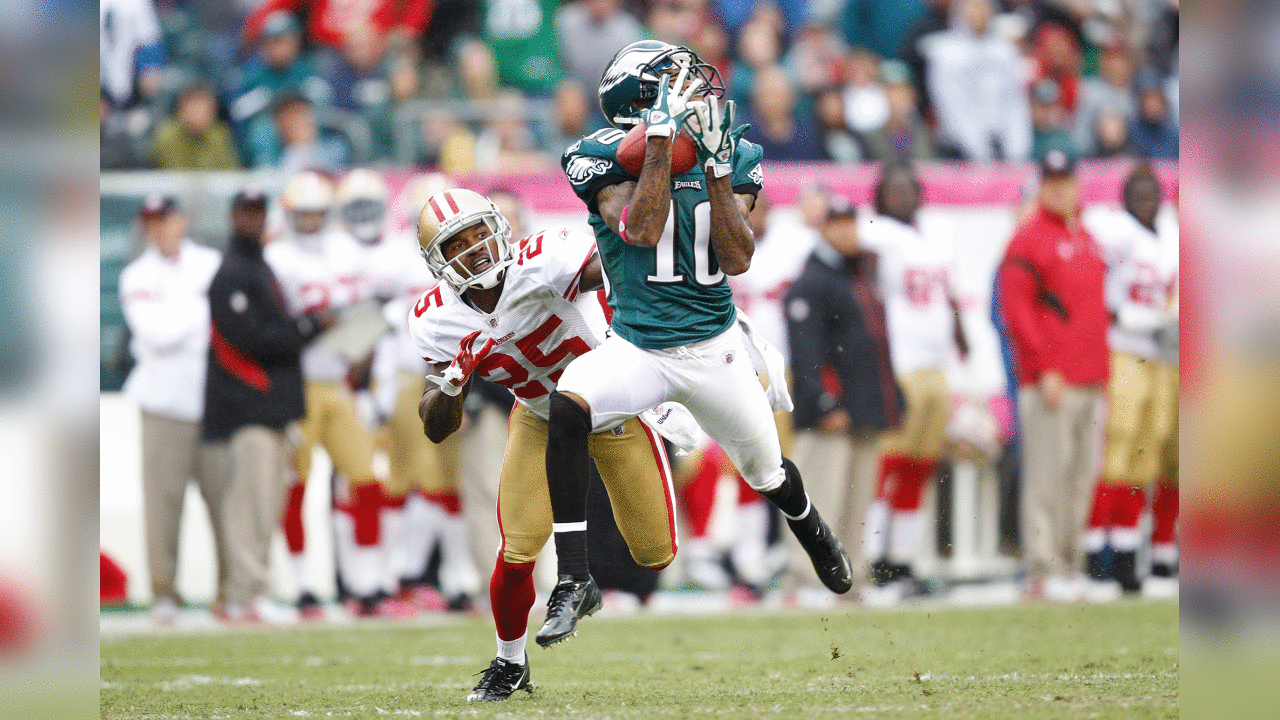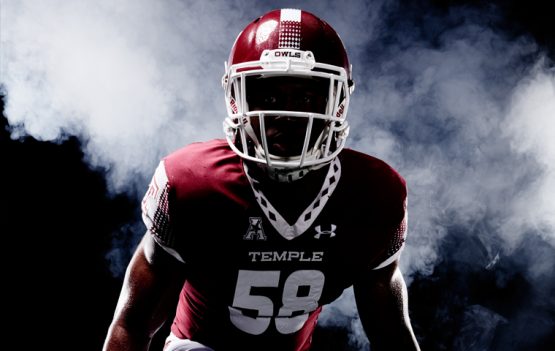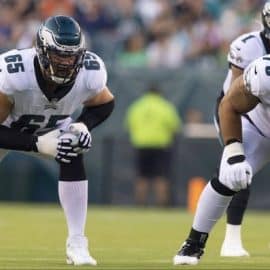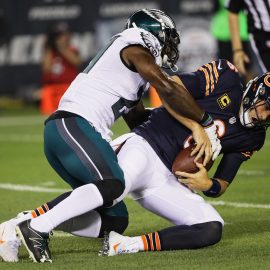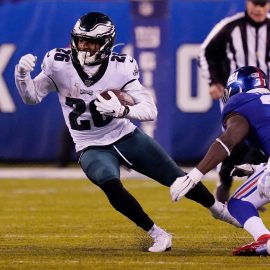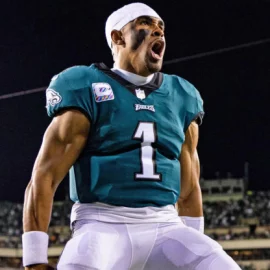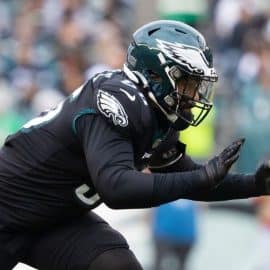And the beat goes on. ESPN’s Adam Schefter was the first to report wide receiver Golden Tate‘s agreeing to terms on a four-year deal with the New York Giants. After Schefter tweeted out the contract details, NBC Sports Philly’s Dave Zangaro noted that Tate should net the Eagles a compensatory pick in 2020.
It’s a 4-year, $37.5 million deal for Tate, with $23 million guaranteed. Nice snag for Mr. Tate. Aw shucks, now we have to face him twice in the regular season. Will he have extra motivation against us? I doubt it. The real pressure on Tate will be coming from Giants fans who are angry OBJ was dealt away.
Cornerback Ronald Darby is flirting with the Chieves.
“The Eagles really want me to stay where I’m at, so me and my agent … we’re just playing everything out. I’m just playing everything by ear, really,” Darby said mid-week.
Translation: Kansas City is desperate for defensive backfield help. They’re going to throw more money at Darby than the Eagles would or should.
Fine.
Then the Eagles offered up to their fans a “mea culpa” for losing Jordan Hicks to the Cardinals by signing veteran linebacker L.J. Fort to a three-year deal on Thursday.
Originally signed by the Browns as a rookie free agent in 2012, Fort enjoyed the best season of his NFL career in 2018 with the Steelers as a reserve inside linebacker and special teams ace with 48 tackles, three tackles for loss, and a sack in 15 games (two starts). He played 29 percent of the snaps on defense and 75 percent of the special teams snaps.
It’s a pathetically cheap deal in contemporary terms. 3 years, $5.6 million, with “only” $1.5 million guaranteed.
The guy has professional grit. Named the FCS Defensive Player of the Year by the College Sporting News at Northern Iowa, the 6-0, 232-pound Fort made the Browns’ 53-man roster out of Training Camp and started against the Eagles in his NFL debut, intercepting quarterback Michael Vick. Fort played all 16 games as a rookie, but bounced around – and moved positions, playing fullback as well as linebacker – before landing with the Steelers in 2015. In all, he’s spent time with the Browns, Broncos, Seahawks, Bengals, Patriots, and Steelers prior to signing in Philadelphia.
Trust me, this is NOT your future replacement at MIKE for Jordan Hicks. It’s just competition for Kamu Grugier-Hill and Paul Worrilow until the Birds either decide to slide Nigel Bradham over to the middle, or actually sign (or draft) a guy who’s even close to Jordan Hicks in developmental talent. And of course, Fort adds some extra juice to special teams, perhaps the only real legitimate reason he was signed.
Now about those two brainstorms I’ve been hatching:
1. Quarterback’s ability to “layer” his passes:
This is a term you occasionally hear but it’s never fully explained.
Let me put it this way—Joe Montana could do it, Joe Namath couldn’t. Sonny Jurgensen could do it, still not sure Carson Wentz can do it consistently.
All guys with big arms, but only two of them had that extra “off-speed pitch” that broke down defenses by feathering the ball on a gentle arc into the dead spot of a zone, just over the out-stretched hands of linebackers and just short of late-breaking safeties and corners.
That’s layering. It takes confidence and tons of film study to pull it off.
The natural impulse for QBs with big arms is to throw hard on a straight line to the intended target. One reason Namath’s career completion percentage was only 50% was he never developed an “off-speed” alternative to basically trying to rifle the pass through the defense. His “fastball” approach eventually produced enough spectacular results to get him into the Hall of Fame. But in reality, it was a feast or famine repertoire that over a career didn’t win many more games that it lost. And he finished his career with 220 INT’s vs. 173 TDs.
Broadway Joe had one of the finest pure passing techniques I’ve ever seen. But he couldn’t (or wouldn’t) “layer” his pitch sequence.
It wasn’t all Joe’s fault. When he came up, every passing concept that stretched defenses vertically had been a simple high/low read. The quarterback reads one defender and throws to a receiver either behind or in front of said defender.
By the early-to-mid ’70’s, defenses evolved to neutralize the high/low read by dropping linebackers into coverage. You could no longer simply sit back and wait for a dig or a drag route to break open and then launch a fireball through the maze. Now you had to come up with another level of target, or another “layer” if you will.
That’s where three-level stretches came in. Offensive coordinators basically added a deep route over the top of some basic high/low concepts to occupy the deep safety and give the offense a 3-on-2 advantage.
The new design opened up soft spots in a zone defense as well, where a savvy QB could flutter timing passes like a drop serve or a lob play in tennis.
Today that basic three-level stretch is known as the “NCAA”, partly because almost every team in college now runs it. It is similar to “Drive with a Drag route” or some other short option and a Dig route downfield, but it also includes a deep Post route over top.
The 5-man’s job is to run a home run Post route. He runs straight down field and breaks inside once he “steps on the toes” of the corner. Limiting that space removes any cushion the defender could use to react to the route’s changing direction.
The 9-man’s job is to run the 15-yard Dig route. Against a zone defense, he can expect the ball right out of his break. If he doesn’t get the ball there, he should continue across the field to the next hole in the defense’s coverage. This is where “layering” ability of the QB can become quite productive. Drew Brees is really good at this sort of thing too, dropping that little slo-mo grenade into the open hole.
The short route of the “NCAA” concept can come in a few variations. One option is to let the running back’s checkdown serve as the short option, as shown in the diagram above. One reason Nick Foles got better over the years is he learned to go with that short option instead of waiting too long to try to force stuff downfield.
Assuming that a blitz never comes, the quarterback first reads the safeties. Particularly against single high coverages, the read is simple. If the Post gets behind the safety, the quarterback hits the Post. Otherwise, he hits the Dig in front of the safety. And if a linebacker has retreated to cover the Dig, the Drag or checkdown will be open for a layered lob—-schwing!…
Today the NFL calls it a “Flood Concept” on offense, with other minor variations, but the principle is the same— if you have a QB who can “layer” his passes among three levels of different targets, you can realistically achieve a completion rate which approaches 70%. The key, once the architecture is set up, comes down to how adept your QB is at mixing in the finesse throws along with the line drives and deep bombs.
2. “False Hustle”…
I’ll get to that next time. Greeeeg Lewis, be patient…
Add The Sports Daily to your Google News Feed!
